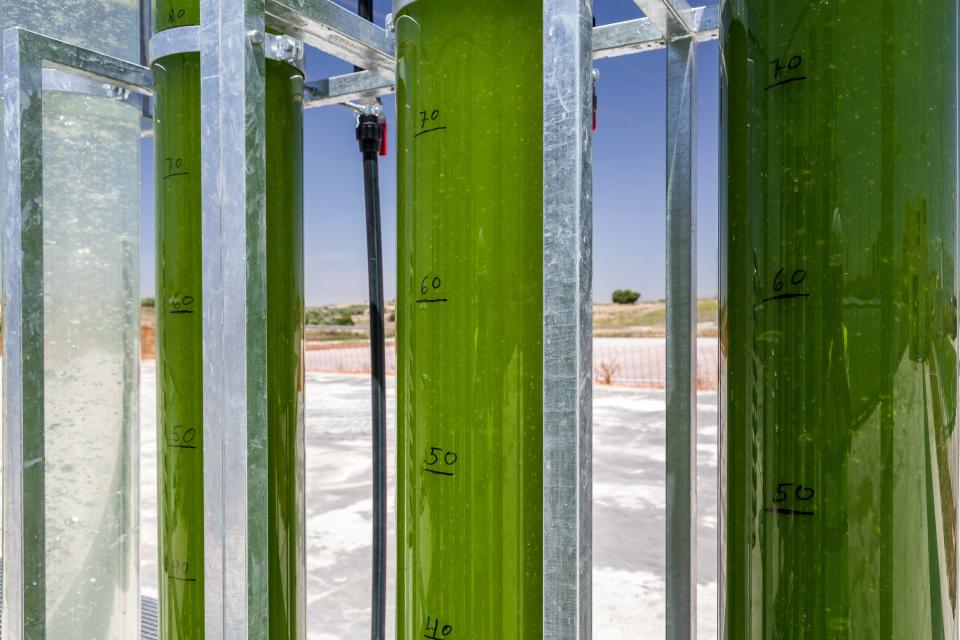5 New Ways of Making Good Use of Carbon Waste

In essence, carbon dioxide is an indicator of life. It reveals the part we play in our planetary ecosystem. But like most things, too much of it can be detrimental. For decades, climate scientists have warned us about the adverse impacts of excess carbon dioxide waste produced as a result of our industrial processes, so much so that during Earth Month this year the United Nations executive climate secretary Simon Stiell issued an official two-year warning to “save the world.”
As a result of these warnings, many individuals, corporations, and governments have made attempts to take accountability for their emissions through offsetting, regulations, and sequestering initiatives. A few solutions have therefore emerged from this burgeoning worldwide recognition that we are in the midst of a climate catastrophe. Among these solutions are carbon removal goals like neutrality and net-zero which can be achieved through a myriad of ways, like switching to solar energy, plant-based diets, and planting more trees (while also putting much more effort into protecting existing forests) which are generally viewed as beacons guiding us towards a habitable planet. But most carbon removal solutions pose significant questions for governments, corporations, and individuals—namely, how can we accelerate and significantly scale our efforts today as we inch closer to a carbon-neutral or net-zero future?

“Humans emit about 40 gigatons of carbon through industry,” says Yao Huang, investor and board director at Carbon Optimum, which has developed a proven technology to neutralize carbon dioxide permanently and profitably by converting it into pharmaceutical grade biomass among many other uses. And according to researchers in the US Department of Energy and Pacific Northwest National Laboratory, the effective path to limiting global warming to 1.5 degrees Celsius by the end of this century likely requires a mix of technologies that can pull carbon dioxide from Earth’s atmosphere and oceans. Citing data from multiple sources, including researchers at University of Exeter and Stanford Doerr Schools of Sustainability, removing just 25% or 10 gigatons of carbon dioxide from the atmosphere and oceans annually will keep us under the 1.5 degree limit, Yao says.
Carbon Optimum is one of many viable and scalable solutions in the market today. And their not-so-secret ingredient is the photosynthetic, aquatic plant-like organism, algae. Algae can be as small as 0.2 millimeters in picoplankton and as large as 60 meters in the form of giant sea kelp. And incredibly, when you take all the types of algae together, this family of flora produces about half of all oxygen on the planet.

Tubular bioreactors filled with green algae fixing carbon dioxide
“The whole thinking behind planting trees is that they suck up a lot of CO2,” explains Huang. “But there are other plants that also take in CO2 and are more efficient at it. Trees are not the most efficient. They are just the most obvious.” Where trees take 10 to 20 years to grow and are susceptible to weather and human caused damage, algae grows quickly and takes up a much smaller footprint. Carbon Optimum takes CO2 [emitted by cement manufacturing facilities among many other emitters] and “pipes it into tanks that are filled with algae,” Huang explains. “Every day we empty [the CO2] and [we] take this mushy biomass, this algae mush, dry it, process it. And [then] you have omega-3 vitamins, or food products, for example.” Carbon Optimum tanks can remove anywhere from one to three million tons of CO2 in each of their tank locations. Scaling is not difficult for Carbon Optimum. “There are thousands of locations around the world,” Huang says. The result is not only pharmaceutical grade biomass that can be used to create vitamins and other food grade products, but also carbon-neutral cement which, when used for buildings, can support zero-carbon architecture.
Scientists, however, caution against the overreliance on any one carbon removal method. Diversifying the market prevents any undue risk posed by it.
Air Company, the world’s leading carbon technology company that creates carbon-negative and neutral alcohols and fuels from CO2, diversifies the carbon removal market by producing products such as AIR eau de parfum, AIR vodka, AIR hand sanitizer, and sustainable aviation fuel (SAF). By using a proprietary technology called a Carbon Conversion Reactor—which mimics photosynthesis using only air (CO2), water, and sun (renewable energy) to create carbon-negative alcohols and fuels from CO2—Air Company is redefining what a regenerative future that works with nature, rather than against it, could look like.

While creating new technologies is one thing, promising scalability is something else entirely. And the latter is what will truly make a difference in the fight against climate change. Scaling carbon removal technology requires a strategic approach that not only disrupts traditional polluting technologies, but also invites them into the process of cleaning up their emissions in a cost-effective way. Carbon Optimum, for example, does this by putting their tanks next to cement and steel plants at no cost to the manufacturers.
As consumers and investors are becoming more discerning about manufacturing’s role in the climate crisis, telling an accurate and exciting story can make all the difference. “These companies can use [our tanks] for their marketing if they want. And, best of all, we’ll show up and do it for free,” Huang says. According to Huang, once a company agrees to place a tank in their location, Carbon Optimum can get the tank up and running within 30 days. “Where we make our profit is by selling the by-product,” Yao says.
Thalo Labs’s cutting-edge reduction platform combines proprietary sensing, software, and capture systems to bring decarbonization tools previously reserved for utility-scale power plants to the built environment. “The built environment is responsible for, depending on which study you look at, usually the first or second worst total amount of greenhouse gas emissions globally,” says Brendan Hermalyn, CEO and founder of Thalo Labs. “We’ve created a platform that works with buildings to help reduce the size of emissions coming out of buildings.”
Thalo uses their hardware to collect and share real-time data, which they share with building operators as customized, actionable insights to improve building operations. “The problem with doing carbon capture really isn’t necessarily the actual physical activity of the capture. It’s really about doing it in a way that is measurable. This way, you can understand exactly how much you have captured in a net sense, including all the things that happen upstream and downstream,” Hermalyn says. “But it’s also very important to do it in a net negative way, right? Where you don't spend five tons of emissions to capture one ton of emissions.”
“We’ve been working with the Empire State Building. And we made some Christmas ornaments out of carbon dioxide that was captured in the Empire State Building,” Hermalyn says. And while that is a good start, for Thalo, the focus isn’t the Christmas ornaments. “Our focus is on the ways in which we can interrupt a supply chain, use that supply chain material to capture and remediate CO2, and then reinject that [captured CO2] into the supply chain, just like any other material.”
Carbon Reform, a cutting-edge carbon capture company located in Philadelphia, captures CO2 and adds it to limestone or chalk. “We’re creating rocks, essentially, where we’re storing the CO2,” says Nick Martin, cofounder and CEO of Carbon Reform. Storing CO2 in a rock is not a new concept. In fact, it is a natural process of our planet. But what is novel is Carbon Reform’s flagship product, the Carbon Capsule, which integrates into existing HVAC systems air streams and continuously removes CO2 from inside of buildings. The captured CO2 is then stored on-site into mineral carbonate (limestone). Limestone and other carbonates have massive applications downstream for green construction. It can be crushed and used as rock, functioning as an aggregate in concrete mix. It can also be used as aggregate on commercial carpet backing, roofing materials, and even paint. “When we talk about new construction, circular economy, we’re putting our device in existing construction to be used in the by-products being used to fuel green construction,” Martin says.
Carbon removal technology is a step in the right direction, but it is not a perfect solution. “The correct thing would be to shut everything down, right? But then we would not be having this [interview] because there’d be no electricity. Because the electricity you’re using to power this phone call is from coal. Yes, there’s some solar; yes, there’s some wind; there’s some other things, but the majority of it is still coal and natural gas,” Yao says, alluding to this transition period that we are in. “We’re literally living in the age of transition—going from the 200-year-old model to something new. But with the transition, we need to build the alternatives first.”
Originally Appeared on Architectural Digest

